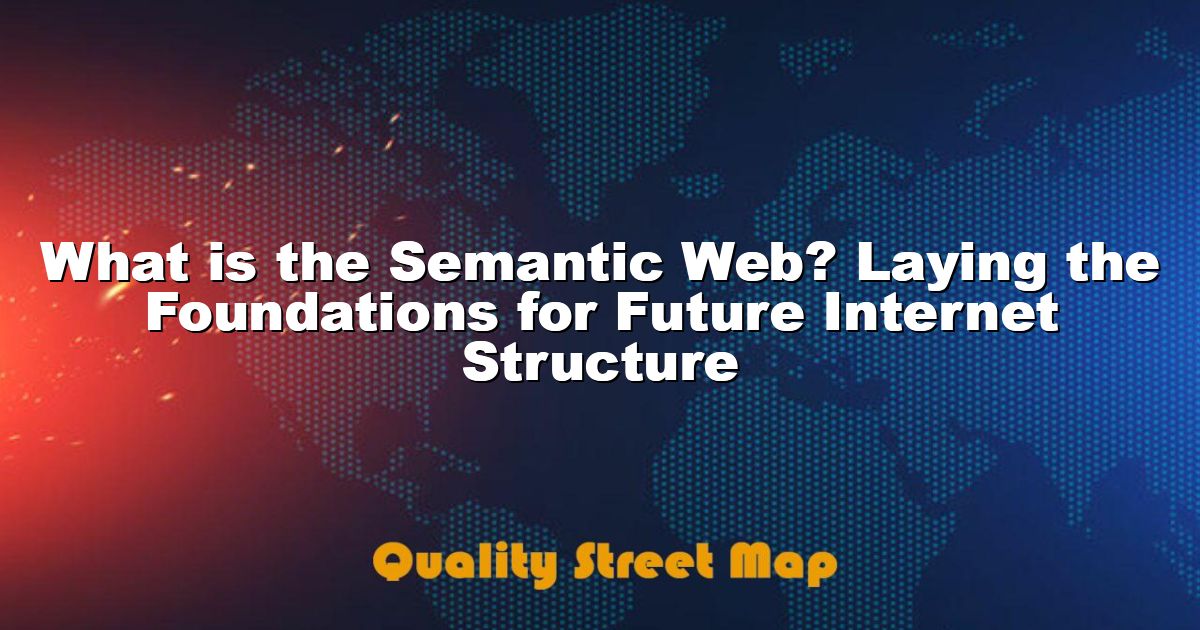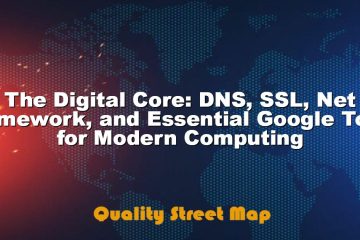What is the Semantic Web? Laying the Foundations for Future Internet Structure

Introduction To The Semantic Web’s Evolution
The rise of the Semantic Web marks a significant milestone in the evolution of the internet, reshaping how we interact with digital information. The Semantic Web is not just an enhancement but a fundamental shift in how What is information is processed online. By adding layers of understanding, it allows computers and humans to work together more efficiently. This evolution is driven by data structuring, standardization, and a collaborative approach to global knowledge. As the web continues to evolve, its potential to revolutionize industries becomes increasingly apparent.
Throughout its development, the Semantic Web has undergone several key phases, each contributing to its current capabilities and future prospects. To understand What is propelling this evolution, consider the following:
- Key Phases of Evolution
- Initial Conceptualization & Vision
- Development of RDF and XML Standards
- Introduction of Ontologies and Taxonomies
- Integration with AI and Machine Learning Technologies
- Implementation in Diverse Sectors
- Security and Privacy Enhancements
- Wider Adoption and Global Collaboration
As these phases unfold, the Semantic Web’s importance becomes more pronounced, reflecting a journey from basic data linking to complex ontological systems. Each phase has contributed distinct tools and methodologies that enhance data connectivity and understanding. The introduction of RDF and XML, for instance, standardized the way data is tagged and related, paving the way for better interoperability across platforms.
The Semantic Web is not just about links between webpages; it’s about linking knowledge itself. This interconnectedness allows for unprecedented possibilities in data sharing and utilization. This web’s ability to knit together diverse knowledge domains enhances decision-making and insights, fostering innovation across fields. As it continues to evolve, the Semantic Web will undeniably lay the groundwork for the future structure of the internet, transforming it into a more meaningful and resourceful entity.
Exploring Technologies Driving The Semantic Web
To truly understand what is driving the advancement of the Semantic Web, it’s essential to explore the technologies at its core. The Semantic Web is not just an enhancement of the current web architecture but establishes a framework built on a synergy of several sophisticated technologies. These technologies collectively enable data to be connected and understood across different systems, fostering an internet where data is interpreted with more depth and precision. The evolution of such a web necessitates technologies that are capable of not only processing but also inferring connections among disparate data points.
Core Technologies
- Resource Description Framework (RDF)
- Web Ontology Language (OWL)
- SPARQL Protocol and RDF Query Language (SPARQL)
- Unified Resource Identifier (URI)
- Simple Protocol and RDF Query Language (SPARQL)
- eXtensible Markup Language (XML)
- Linked Data Principles
These core technologies collectively play a pivotal role in the advancement of the Semantic Web. They provide the necessary tools to store, query, and present data in a meaningful manner. The entire framework hinges on proficient data retrieval and interpretation, where inferences can be drawn from logically connected datasets. Despite sounding technically complex, they essentially empower machines to grasp the semantics behind data, respecting the context and connections inherent in human-dominated information-sharing processes.
RDF And OWL
The Resource Description Framework (RDF) and the Web Ontology Language (OWL) are foundational technologies that establish the structure and relationships within the Semantic Web. RDF is designed to describe web resources, creating a standardized model that defines how resources are related to each other. Meanwhile, OWL allows for more complex relations and hierarchies, building sophisticated ontologies that reflect the real-world nuances of data. It provides a formal description of the vast expanse of interconnected information, enabling machines to process and integrate data with human-like understanding.
SPARQL Language
SPARQL, known for its robust querying capabilities, is essential for accessing and manipulating data stored in RDF format. As a powerful query language, SPARQL allows users to retrieve and manipulate data across varied datasets seamlessly. It can be compared to SQL’s function in relational databases but with the added advantage of querying over distributed data on the web. This language is critical for enabling applications to fetch data from vast, publicly accessible RDF stores, cementing its role as a cornerstone of data retrieval in the Semantic Web.
Use Cases And Applications
The implementation of the Semantic Web’s technologies opens doors to numerous applications and use cases that were previously unachievable with conventional web technologies. From enhancing search engine capabilities to providing more intuitive artificial intelligence solutions, the Semantic Web is reshaping the manner in which data-driven services are conceived and executed. Industry-specific applications range from healthcare, improving diagnosis precision, to e-commerce, enhancing recommendation systems through detailed understanding of user behavior. Through intelligent connectivity and deduction, the Semantic Web offers a transformative potential, steering the future of internet architecture.
Key Takeaways Of Semantic Web Potential
The Semantic Web, often dubbed as the future framework of the internet, aims to make data integration across different platforms more seamless and intelligent. Understanding what is at the core of this development is essential for adapting to inevitable changes in digital communication and data processing. As we move towards a more interconnected digital realm, the Semantic Web’s potential can revolutionize how we access and share information, fundamentally altering user experiences across the globe.
The potential of the Semantic Web lies in its ability to usher in an era where machines can understand and respond to complex human requests based on their meaning, almost like humans do. Actionable Insights
- Embrace new technologies to facilitate the transition to a Semantic Web environment.
- Ensure that your digital content is compatible with semantic web technologies to remain competitive.
- Integrate structured data and metadata within your web assets.
- Invest in staff training focused on semantic technologies.
- Monitor industry trends for the latest Semantic Web advancements.
- Align your digital strategy with the broader goals of the semantic web movement.
- Utilize Semantic Web tools and platforms to optimize data management and utilization.
As the Semantic Web continues to evolve, its effects on various domains, from healthcare to e-commerce, will become more pronounced. Businesses and individuals need to recognize what is changing and adapt accordingly to take full advantage of these transformative capabilities. The adoption of standardized practices and collaborative efforts among tech industries is essential to cultivate a robust Semantic Web environment.
Ultimately, the future prosperity of the Semantic Web depends on global cooperation and a shared vision. Stakeholders across different sectors must consider what is necessary to support a semantic overhaul of the existing web structure. By doing so, they can ensure that the power of a more connected and intelligent internet is harnessed for the betterment of society as a whole.















